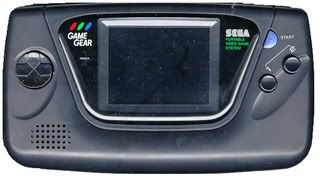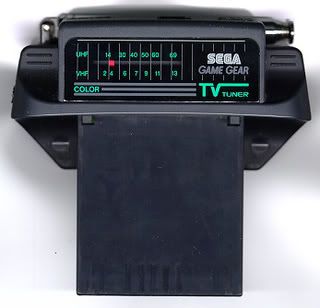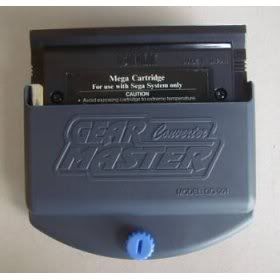

In the early 90’s Nintendo was dominating the handheld video game market with the GameBoy that featured a simple yet effective monochrome display, Sega responded to this by releasing a back lit full colour displayed handheld system called the Game Gear also known as Project Mercury during its development. The Game Gear '1uped' the GameBoy in terms of technical specifications but wasn’t the first colour handheld system on the market at the time as the Atari Lynx and the NEC Turbo Express had beaten Sega to the punch.
What and When
The Sega Game Gear is essentially a portable version of the Sega Master System but with an increased colour pallet plus stereo sound available though the use of head phone. It also featured a more ergonomic design when compared to its competitors at the time. Consumers literally got their hands on the Sega Game Gear in Japan late 1990 followed by North America and Europe in 1991, Australia was last on the release list as systems hit our shores in 1992. Sega discontinued the system five years down the track in 1997 but Majesco stepped in and kept the Game Gear flame a light by continuing to manufacture the system in 2000. Although it was ascetically identical to the original and the issue of the screen suffering from a low refresh rate with fast paced games was improved, unfortunately the Majesco version wasn’t compatible with some previous accessories like the TV Tuner.
Even though the Game Gear out classed the GameBoy technically with a backlit colour screen, this extra performance came at a cost as the Game Gear chewed away at the six AA batteries that were required to power the system. If alkaline batteries were used an average of five hours game play was achievable which paled in comparison to the GameBoy’s average of 35 hours, battery life was one of the main reasons Nintendo didn’t move on to a colour screen as battery technology wasn’t as strong as it is today. Lithium-ion batteries were not mainstream at the time, this was a common problem with handheld systems that featured backlit colour displays of this era. To combat the power consumption issue Sega offered many alternate power source options (see accessories for more information) but this issue did deter many consumers.
Sharing the architecture with the Sega Master System made it easy for developers to port over existing tiles to the Game Gear, which over time built up a game library of around 300 titles all of which are region free which is common amongst most handhelds, and by using the Master Gear accessory over 200 more Sega Master System titles can be used. Not limiting the selection Sega and third party developers tried to cover most genres giving users a decent variety of games to choose from.
Accessories
With most portable handheld gaming systems manufactures like to offer a good variety of accessories to enhance and complement their systems. The Game Gear continues that tradition by offering a very good variety of peripherals to choose from. As you would expect with a handheld system the usually carry cases, screen magnifiers, system to system link cables, and aftermarket cheat devices were available. To compensate for the Game Gears bad habit of devouring AA batteries Sega has offered numerous power supply options which include a car adaptor, AC mains adaptor which doubles as the charger for the two variants of rechargeable power packs. One rechargeable power pack is separated from the Game Gear unit that can clip onto a belt, while the other integrates with the Game Gear its self but adds to the over all weight of the unit.

The Game Gear TV Tuner allows the Game Gear to receive a public broadcast television signal, which at the time was appealing feature consider the prices of portable colour TVs. The TV Tuner was region specific with each being geared towards the broadcast signals of its release region, plus compatibility was reduced to specific versions of the Game Gear, units that have a serial number beginning with a letter were be compatible with the TV tuner.

To further expand the Game Gear’s already extensive library the Master Gear converter allowed owners to play existing Sega Master System games, this was done with ease thanks to similar architecture shared between the two systems.
Variations
- Sega Game Gear
- Game Gear Black
- Game Gear Blue Released in 1993, with the game World Series Baseball
- Game Gear Gray 2000 (Reproduced by Majesto)
- Game Gear Coca-Cola RedJapanese release in 1994, bundled with Coca-Cola Kid game
- Game Gear White
Game Gear Specs and Media
- Main processor: Zilog Z80(8-bit)
- Processor speed: 3.58 MHz(same as NTSC dot clock)
- Resolution: 160 x 144 pixels
- Colours available: 4,096
- Colours on screen: 32
- Maximum sprites: 64
- Sprite size: 8x8 or 8x16
- Screen size: 3.2 inches (81 mm)
- Audio: 3 square wave generators, 1 noise generator, stereo sound through head phones only.
- RAM: 8 KB
- Video RAM: 16KB
- Internal Power: 6 AA Batteries
- External Power: 9V DC, 300mA, 3W
- Dimensions: 20cm x 11,3cm x ?
- Weight: ~400g
- Units Sold: 11 million
Sega Game Gear US Commercial
Sega Game Gear Japanese Commercial
Sources







1 comment:
Nice Work Matt when's the next retrospective coming?
Post a Comment